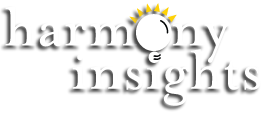I was recently sitting at a restaurant, waiting for a friend to arrive, when I noticed that the couple next to me was engaged in a performance review conversation.
A middle-aged woman sat tall and alert on one side of the table, her lunch hardly touched. Across from her, an older gray-haired man in a dark business suit sat hunched over his empty plate. It was her performance that was under the microscope.
The nature of the conversation was easily recognizable. I’ve experienced many of them myself. Most of us have.
We sit down with our supervisors, craving an open, honest dialogue that leaves us feeling appreciated, validated, and of continued value to the company.
It is more like a leisurely game of catch than a fast-paced tennis match. Rather than a rapid-fire exchange, we hold the ball in our glove, taking a moment to sense form and weight before tossing it back across the table to be received and considered by one who is higher up on the ladder.
To continue the analogy, it is not only the ball itself but how it is thrown that makes an impact.
When the eyes say one thing, and the tongue another, a practiced man relies on the language of the first. ~Ralph Waldo Emerson
When I turned away from the couple to my left, I heard what I expected to hear. She touted achievements, voiced concerns, and proposed ideas. He prodded her for additional thoughts and ensured her that he was open to her input.
However, when I glanced back at my neighbors, I observed the true message being communicated by the woman’s supervisor.
He remained hunched over his empty plate, elbows planted firmly on either side of it, arms forming an upright barricade.
More noticeably, he clutched his coffee cup, however full, between both hands… directly in front of his mouth. Every word that he spoke, for an extended period of time, was to the cup and not to his direct report.
His words communicated that he was receptive, but his non-verbal body language communicated the exact opposite. He had built a wall that would ultimately hinder his ability to establish rapport with the most important person in the room.
Open, effective communication is founded in trust, honesty, transparency, authenticity, integrity… the list goes on. It is more an art than a science. It is a skill that we hone our entire lives, often falling short one day only to meet with success the next.
What is the “coffee cup” in your world, the self-imposed non-verbal obstacle between you and your audience? Skeptical facial expression? Closed posture? Poor eye contact? Disinterested tone of voice?
Whatever it is, it may be undermining every effort you make to connect meaningfully with those who matter most.

